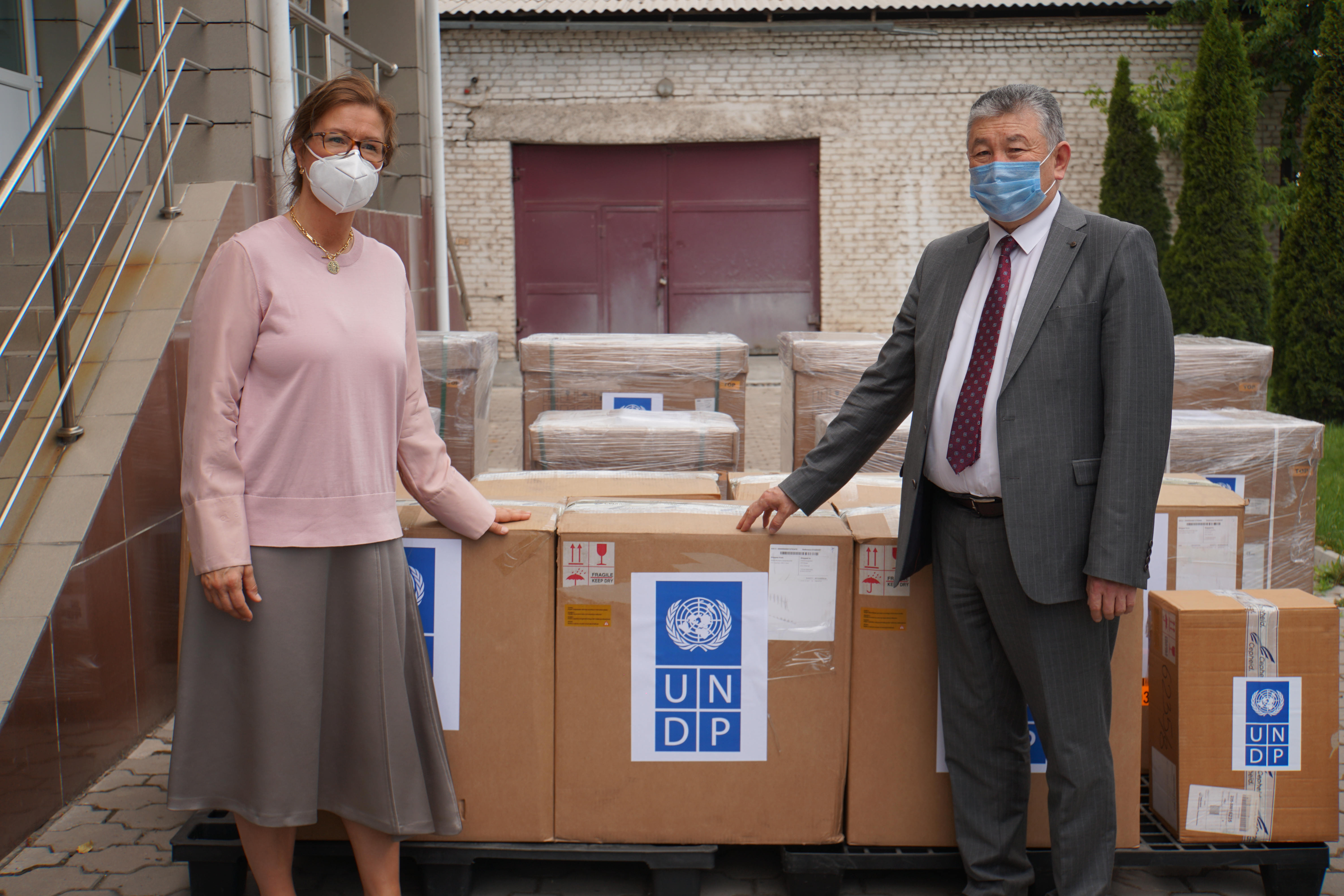Today marked a significant milestone in disaster monitoring and forecasting with the introduction of a cutting-edge IT module designed for Glacier Lake Outburst Flood (GLOF) monitoring. The unveiling took place within the framework of the "Reducing Risks and Vulnerabilities from Glacier Lake Outburst Floods (GLOF) and Mudslide in Kyrgyzstan through Strengthening the National Disaster Monitoring System and Communities’ Adaptive Capacity" project.
Innovative IT Module Unveiled for Glacier Lake Monitoring in Kyrgyzstan
March 11, 2024

Bishkek, March 11, 2024 – Today marked a significant milestone in disaster monitoring and forecasting with the introduction of a cutting-edge IT module designed for Glacier Lake Outburst Flood (GLOF) monitoring. The unveiling took place within the framework of the "Reducing Risks and Vulnerabilities from Glacier Lake Outburst Floods (GLOF) and Mudslide in Kyrgyzstan through Strengthening the National Disaster Monitoring System and Communities’ Adaptive Capacity" project. The event drew attendees from various ministries, international organizations, and projects, including representatives from the Ministry of Emergency Situations of the Kyrgyz Republic (MES KR), the Embassy of Japan in the Kyrgyz Republic, and the United Nations Development Programme (UNDP) in Kyrgyzstan.
Kyrgyzstan faces the threat of more than two thousand glacial lakes experiencing outbursts, with nearly 20% posing a high risk due to the instability of natural dams and melting ice. This threat, directly linked to permafrost degradation, endangers populations, infrastructure, and the environment. The most recent significant flood caused by a high-mountain glacial lake outburst occurred on July 8, 2022, in the Jeti-Oguz district of the Issyk-Kul region.
Against the backdrop of escalating environmental concerns, the unveiling of the newly developed IT module, part of the Unified Information System for Monitoring Glacier Lake Outburst Flooding Risk, symbolizes a proactive step towards safeguarding communities and ecosystems from the devastating impact of natural disasters. This innovative module integrates AI technology, employing a machine learning process, to enhance forecast accuracy, providing timely and crucial information for effective risk mitigation, which has been done for the first time in disaster monitoring and forecasting in the country.
The event commenced with presentations on the current status of the Disaster Monitoring and Forecasting System, laying the groundwork for unveiling the IT module designed to comprehensively digitize and automate processes related to GLOF monitoring and forecasting.

Deputy Minister of Emergency Situations delivers his opening remarks
Mr. Hideki Goda, Ambassador Extraordinary and Plenipotentiary of Japan to the Kyrgyz Republic, expressed Japan's commitment to supporting disaster prevention and mitigation efforts, and stated, "This innovative system exemplifies the power of collaboration in disaster prevention and mitigation efforts, not only in Kyrgyzstan but also across the region."

Ambassador Goda delivers his opening remarks
Key features of the IT module include proprietary algorithms based on machine learning for automatic lake area calculation and threat detection, multi-parameter analysis for comprehensive risk assessment, and forecasting capabilities tailored to individual lakes. Moreover, the system facilitates real-time monitoring and alerts relevant authorities in case of potential threats.

The presentation also featured practical demonstrations of the IT module's functionalities, including a mobile application for on-the-go monitoring and data access. Attendees had the opportunity to engage in a Q&A session to further explore the system's capabilities and potential applications.
The presentation of this innovative IT module underscores UNDP Kyrgyzstan's commitment to leveraging technology for disaster risk reduction and environmental conservation. By providing an effective tool for ensuring the safety of communities and the environment, the Unified Information System for Monitoring Glacial Lake Outburst Floods contributes significantly to minimizing the impact of natural disasters.
****
“Reducing Risks and Vulnerabilities from Glacier Lake Outburst Floods (GLOF) and Mudslide in Kyrgyzstan through Strengthening the National Disaster Monitoring System and Communities’ Adaptive Capacity” project aims to minimize the risks and vulnerabilities associated with potential disasters related to glacial lake outbursts and subsequent floods, ensuring the protection of local communities. The project's implementation is made possible within the Climate Promise Initiative through the financial support of the government of Japan via the United Nations Development Programme (UNDP).
Contacts for the media:
Ainagul Abdrakhmanova, Communications Officer at +996775755776

 Locations
Locations












